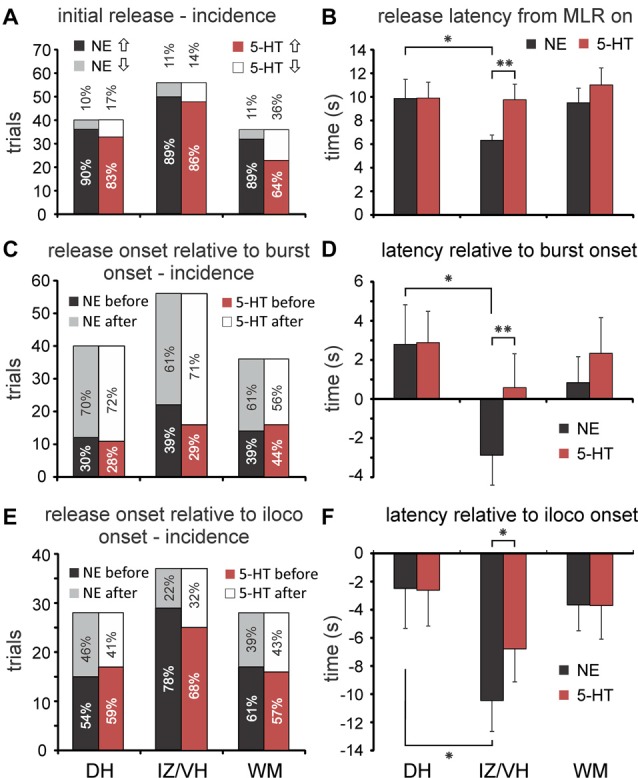Figure 5.

Incidence and latencies of monoamine transmitter release during MLR-evoked fictive locomotion. (A) Profiles of initial changes in 5-HT and NE concentrations (incidence) in dorsal horn (DH), intermediate zone/ventral horn (IZ/VH) and in the adjacent white matter (WM) of middle and caudal lumbar segments with stimulation of the MLR. (B) Onset latencies of monoamine release (mean and SEM in B,D,F) relative to onset of MLR stimulation. NE onset latencies in the IZ/VH were significantly shorter compared to those observed in the DH and for those observed for 5-HT in the IZ/VH. (C) Timing of changes in release in DH, IZ/VH, and WM relative to the onset of burst activity in hindlimb ENGs. Percentages of occurrence (incidences) are given. (D) Onset latencies of monoamine release relative to onset of burst activity. NE onset latencies in the IZ/VH were significantly earlier compared to those observed in the DH and for those observed for 5-HT in the IZ/VH. (E) Timing of changes in release in DH, IZ/VH, and WM relative to the onset of ipsilateral locomotion. Percentages of occurrence (incidences) are given. Note that in all locations, changes in monoamine release usually occurred before the onset of locomotion. (F) Onset latencies of monoamine release relative to onset of ipsilateral locomotion. NE onset latencies in the IZ/VH were significantly earlier compared to those observed in the DH and for those observed for 5-HT in the IZ/VH. *p < 0.05, **p < 0.01.
